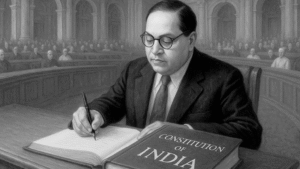Delhi-NCR Traffic Restrictions: No Entry for Goods Vehicles on Key Routes
Introduction
The Delhi Traffic Police have recently imposed new restrictions on the entry of goods vehicles in the Delhi-NCR region. These measures, effective six days a week, are aimed at reducing traffic congestion and improving air quality. With certain exemptions for emergency and defense vehicles, these regulations are expected to streamline traffic flow and combat pollution levels.
In this article, we will provide a detailed breakdown of these restrictions, affected routes, implications for commuters and transporters, and strategies to navigate the changes effectively.
Understanding the New Traffic Restrictions
The Delhi Traffic Police have implemented a ‘No Entry’ rule for specific goods vehicles across multiple routes in Delhi-NCR. This restriction applies from Monday to Saturday, with Sunday as the only exception. The move is a part of the broader initiative under the Graded Response Action Plan (GRAP) Stage IV, aimed at tackling pollution and traffic congestion.
Exemptions to the Rule
While heavy commercial vehicles face entry restrictions, some essential services are exempted, including:
- Emergency Vehicles: Police cars, ambulances, and fire brigades.
- Defense and Paramilitary Forces: Vehicles related to the army and paramilitary organizations.
These exemptions ensure that critical services are not affected by the new restrictions.
Why These Restrictions?
The rationale behind implementing these restrictions includes:
- Traffic Decongestion: Heavy goods vehicles contribute significantly to road congestion, slowing down daily commutes. Restricting their movement is expected to ease road conditions for regular commuters.
- Air Pollution Control: Delhi is known for its alarming pollution levels, and heavy-duty vehicles contribute largely to air pollution. This measure aligns with GRAP Stage IV regulations, which aim to reduce emissions.
Impact of Air Pollution on Delhi-NCR
Delhi has been consistently ranked as one of the most polluted cities in the world. The Central Pollution Control Board (CPCB) and Delhi Traffic Police have collaborated to introduce measures that curb emissions from vehicular traffic.
Implications for Commuters and Transporters
- For Commuters: Expect smoother traffic conditions and reduced travel time due to fewer heavy vehicles on the roads.
- For Transporters: Logistics and delivery schedules need to be adjusted. Transporters must plan deliveries during permitted hours or on Sundays to avoid penalties and ensure smooth operations.
Key Routes Affected by the Ban
These restrictions are applicable across several major routes in Delhi, Noida, Gurugram, Ghaziabad, and Faridabad. Some of the key affected highways and expressways include:
- Delhi-Meerut Expressway
- NH-48 (Delhi-Gurugram Expressway)
- Delhi-Faridabad Road
- NH-9 (Delhi-Ghaziabad Highway)
How to Navigate the New Traffic Norms?
To adapt to these new restrictions, follow these key strategies:
- Check Real-Time Updates: Stay informed via Delhi Traffic Police’s official website or traffic navigation apps.
- Plan Alternative Routes: Avoid congested routes and explore less-traveled roads.
- Use Technology for Traffic Insights: Apps like Google Maps and government traffic alerts can help track real-time congestion levels.
- Adjust Delivery Timings: If you operate commercial vehicles, reschedule deliveries during non-restricted hours or on Sundays.
Enforcement and Penalties
The Delhi Traffic Police have deployed strict monitoring systems to ensure compliance. Violators may face hefty fines and penalties.
According to reports, numerous vehicles have already been penalized for non-compliance. The authorities are actively conducting surprise checks at entry points and intersections to enforce the new rules.
👉 Read more: Delhi Traffic Police Intensify Drive to Fine Vehicles Violating Norms
The Bigger Picture: GRAP Stage IV Measures
These restrictions are a crucial part of GRAP Stage IV, which includes:
- Ban on Non-Essential Truck Entry: Trucks carrying non-essential items are prohibited from entering Delhi.
- Restriction on Older Vehicles: BS-III petrol and BS-IV diesel vehicles are restricted due to high pollution output.
👉 Read more: No Entry for Trucks Carrying Non-Essential Items into Delhi
Public Reaction and Concerns
- Positive Feedback: Many commuters have noticed improved traffic conditions during peak hours.
- Challenges for Transporters: Businesses relying on daily transportation of goods have expressed concerns regarding delays and logistical disruptions.
To address concerns, authorities are considering implementing alternative solutions such as dedicated commercial vehicle lanes or time-bound entry permits.
Future Solutions for Sustainable Urban Mobility
While these restrictions are a step in the right direction, long-term urban mobility solutions need to be considered:
- Enhanced Public Transport: Expanding metro and bus networks can reduce private vehicle dependency.
- Encouraging Green Vehicles: Promoting electric and CNG vehicles to lower emissions.
- Better Urban Planning: Developing sustainable city infrastructure, including dedicated freight corridors, to support growing traffic demands.
Conclusion
The recent Delhi-NCR traffic restrictions on goods vehicles are a much-needed step towards decongesting roads and improving air quality. While the measures pose challenges for transporters, they ultimately contribute to a cleaner and more efficient urban environment.
Staying informed, planning ahead, and adapting to sustainable transportation methods can help individuals and businesses navigate these changes effectively.
Share this content:











Post Comment